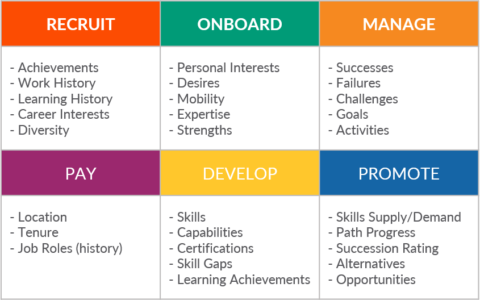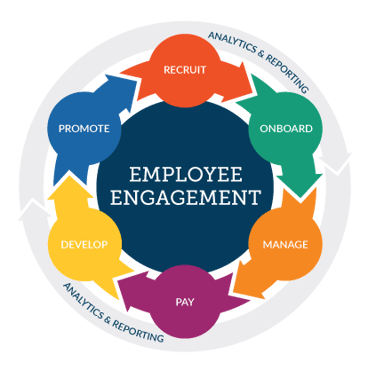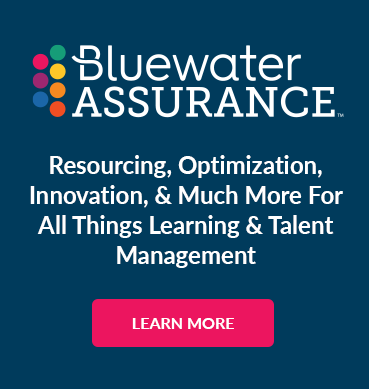How to Drive Employee Engagement with Data
by Chris Bond | November 30, 2020 09:09 AM | Employee Engagement, Data

There's a chilling challenge that stands in front of us
The challenge is, how do we maintain engagement with our employees in a way that shows them value as they continue to show value back to our business? Without this critical engagement, without the opportunity to truly develop a relationship with our employees, we will not be able to meet the business challenges that drive us forward in the future.
So, how do we handle this? How do we begin to think about employee engagement in a unique way? There are so many theories about different ways to engage & motivate. In fact, many books have been written over the years to try to help us find that perfect model.
There is no perfect model
While there is indeed no perfect model, I do believe that there is data that will help us to continue driving engagement with employees. The question is where do we find this data and then how do we interpret the data in order to understand what it really takes to engage our employees? And, maybe most importantly, how do we allow information and data to impact our employees’ own engagement with others as well as with the organization?
First, I’m going to take you through a brief journey of an Employee Engagement Life Cycle that is key to capturing the data you need in order to be able to understand and drive an employee engagement model. It will also help you understand how employees can self-manage some of this engagement with other individuals.
If it’s just about us trying to drive engagement with employees and it’s not focused on developing a holistic cycle of communication, collaboration engagement, and relationships, then we will never move to that next step that we all seek to achieve.
Recruiting & Onboarding
Our Employee Engagement Life Cycle looks at all of the technology-driven impact points between ourselves and the employee. First, we start with recruiting, or talent acquisition, which is the first moment at which we engage a prospective employee. We all know that this process is most critical in driving long-term engagement. The second step, once we have hired the employee, is onboarding. This is a critical point at which we should begin the lifelong engagement process at our organization. Two important points of data collection have already been addressed here.
The information that we gather about the employee during the recruiting and the onboarding process should set up that employee for long-term success in long-term engagement across the entire organization. What data do you need to collect to begin understanding your new employee? Please see the end of this article for a list of data points to get you started.
Capturing Data
How many of these types of data points are you capturing today when you’re onboarding an employee? We see several organizations that are capturing a majority of this information during the recruiting process. The more information and data you have, the easier it will be to engage an employee as you move through the Employee Engagement Life Cycle.
If you’re not capturing this type of information, then you are like 90% of businesses. Our biggest issue as an industry is honestly related back to data. Think about your HRIS implementation or your most recent learning or talent management system implementation. Your biggest struggle was likely always about the data. My first encouragement for you today is to go work on that data and begin to capture relevant information around recruiting & onboarding in order to drive through the next segments in the Employee Engagement Life Cycle. Now our new employee has been on-boarded and begins to move into the standard process of work inside our organization.
Managing Human Capital
Management is the third segment of the Employee Engagement Life Cycle. As we manage our employees, we’re gathering an enormous amount of data. However, most of the time we’re not actually capturing any of this data and it really becomes anecdotal evidence of what’s going on around us and the repository of the data is the human mind. We need to find a way to transition that set of information back into systems that allow us to engage our employees. It also will provide us with more information to help facilitate a better working environment for our people. Over the years, the primary method of capturing this data has been through goals and performance reviews. We are seeing fewer people choosing to use performance reviews as a measuring stick, but that also means that we’re missing the opportunity to capture data.
Organizations that are successfully capturing data about their people during the flow of work are doing so with tools that are capturing constant or consistent conversations. Now, that doesn’t mean that they’re actually capturing the conversation. What that means is that the results of conversation the information gathered are entered into a system by both the employee and the manager in order to be able to help facilitate a longer-term process of engagement. I would encourage you that this should not be about evaluation, rather this should be about collaboration. There are a variety of data points that you might consider capturing. These data points should be specific to your industry and to your knowledge of the needs of the workforce.
Employee Pay
The fourth segment of the Employee Engagement Life Cycle is pay. We’re already capturing a tremendous amount of information here because it’s required in order to be able to pay people. However, much of this information is confidential and so I’m always very cautious about recommending using any data from your pay cycles in order to be able to drive employee engagement. That being said, there is a tremendous opportunity because the pay is one of the top engagement activities that we see for employees towards their employer. People want to go see their paychecks. They want to understand their compensation. And this provides you an opportunity to use that in order to drive people back into the systems in order to engage to capture further data and to give you information to make future decisions.
Developing Employees
Let’s review where we’ve gone so far. We Recruit, Onboard, Manage and Pay. That is a lot of activities so far, but the true transformation comes in the next segment – Develop. The development process is actually where we’re going to collect the most data about individuals because it is the top activity for engagement. When we think about the development of an individual inside our organization, we have to look at three specific factors.
- Future Career Path
- Business Requirements – Demand
- Current Skills and Capabilities – Supply
How do we communicate to an employee that they have value? We tell them that they have a long-term career opportunity at our company. That is why career pathing is absolutely number one in terms of development. Development for the sake of training, without a focus on a future career path, is going to be void of some value for your employees, and quite honestly, for your organization. Have you developed a career path program? If you’re collecting the data in the Recruiting, Onboarding, and Management segments, then you have the data you need to drive engagement through a Career Path program.
The second element of the developed segment is really around business requirements. Do you understand the demand for skills inside your organization? This is a critical data point that will help you in the engagement of an employee. Without this information, we’re developing and providing careers without a match to the business. This actually will create negative engagement for the employee. They see the truth in their current and future situation much better than we could possibly imagine. We must understand the demand for skills inside our business.
This might be the most difficult segment of data collection that you will have because skills demand is not something that most organizations are capturing. Our ERP, HRIS, learning, and talent systems traditionally do not look at business demand as a key factor and driving future development. It’s something that we know intuitively but not something that is a prioritized data collection point. This must change in the future in order to be able to understand the massive migration of skill requirements inside businesses around the world.
Skills & Capabilities
The third element of the develop segment is understanding the actual skills and capabilities of our individual employees. Several learning management systems or capturing this information today and maybe one of your greatest resources of information. If you are not capturing skill information or capability information about your employees in your learning and talent systems today, I would encourage you to make that move because it will be critical for your future. Now that we understand the demand and the supply of skills, we can perform a gap analysis.
How easy is it to go to an employee today and to tell them that you know exactly what we need as an organization and this is how you fit in our future plans?
This is a great encouragement to employees and, in my opinion, one of the greatest areas of engagement that we can use to drive a future relationship with the people that are going to make our business successful. Using data to develop information in order to make decisions around career path things is critical. We still need the ability for people to operate under emotions and desires and so career path things should never be 100% data-driven. Yet like you, I want to give our employees as much information as possible in order to help them make their own decisions about a future career path.
Handling Promotions
If we’re going to be driving interaction and engagement through development and a career path, then the next step logically is promotion. We want to use data in order to drive succession planning and promotion throughout the entire organization. The career path data should already set you up with this engagement and should allow you the opportunity to continue that process by showing employees in the organization that there truly is a path for their future at your business. The wonderful thing about promotion is the data that we capture in this process feeds directly back into our internal talent acquisition process. And now the cycle starts all over again because as we promote people, we are truly recruiting them into different roles. The Employee Engagement Life Cycle starts again from the beginning.
Conclusion
I encourage you to think about your Learning and Talent systems as connected tools to capture data and to provide information to help you drive employee engagement. The data points inside this article, our recommendations, and a small subset of the information & data that’s available for you to collect and use will drive employee engagement.
Looking to get started? Here are a few data points to consider.

In a future article, I will address the analysis of this data in order to be able to help understand how people data can help you strategically plan and transform your business for the future of work. If you have questions, I would love to explore this topic further and speak with you at any time. Please know that your Learning and Talent tools are not the easy button for employee engagement, but they are a path to engagement that will live on through the entire career of every employee.
Interested in learning more about how to drive employee engagement?
Feel free to reach out to us directly!
Search Our Blogs
Categories
- Ad Hoc
- ADMIN
- administration
- AI
- analytics
- anxiety
- Artificial intelligence
- automation
- BI
- blog
- Blueprint
- center of excellence
- Communication
- COVID-19
- Culture
- Custom Content
- customer service
- Data
- Employee Engagement
- Shark Bites - Cornerstone Edition
- Shark Bites - SumTotal Edition
- Shark Bites - Ultimate Edition
- The Future of Learning
- The Future of Talent Management
- User Experience
- UX
- wellbeing


